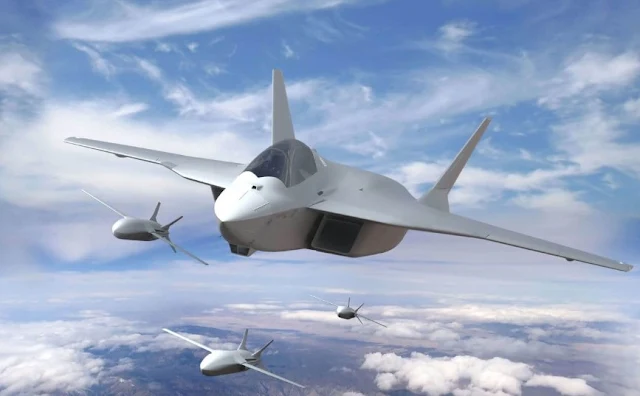 |
| The Capabilities Which Will Future 6th-Generation Fighter Jet |
International Military - The future fighter jet or better known as the sixth generation is still a concept. Because after all, only the previous generation, namely the fifth generation, is still being developed. Even so, there are already several countries that are trying to build a future fighter jet.
Call it the United States, Japan, Russia, Britain, France, and China. But out of so many countries mentioned, only the US has answered the question of who will own the sixth-generation fighter jet first.
The US has named its future fighter jet NGAD. NGAD stands for Next Generation Air Dominance. This jet is believed to be a bridge to the future of their air force.
Quoted from 19fortyfive, the US President has approved a budget of 9 billion US dollars for it. The money was entrusted to research, development, testing and evaluation in the construction of NGAD. "We've now started the EMD (engineering, manufacturing, development) program," said Air Force Secretary Frank Kendall.
 |
| The Two F-22 Raptor Stealth Fighter |
Because it has entered that stage, most likely the aircraft design has been approved by the higher-ups. To create the fighter jet of the future, the Pentagon will take the fifth-generation F-22 Raptor as a "bridge". “We treat the F-22 as a bridge to Next Generation Air Dominance or NGAD,” said Lieutenant General Clinton Hinote.
 |
| 6th-Generation Tempest Fighter Jet |
The F-22 Raptor itself is the most dominant fifth-generation fighter jet in the air. This type of jet is designed to seize air superiority. That is, the fighter jet is not only fast, but very agile. Then the question is, how is the ability of this sixth generation fighter jet?
Many believe that one of the abilities that must be possessed is being able to avoid air defense systems. To be able to do this, Defense View describes three conditions.
First, future fighter jets must be able to detect the opponent's defense system first. It is still difficult to do now, because ground-based radar is still much more powerful than aircraft radar. But if that happens, the pilot can destroy it right away.
This is important, to pave the way for other aerial combat platforms, such as helicopters and drones. And to be able to "see" the enemy's position first, of course the fighter jet must not be seen by the ground radar. This means that the stealth capabilities of future fighter jets will be better than the current fifth generation.
Furthermore, the fighter jet must have hypersonic speeds. Hypersonic speed itself is rated at speeds above Mach 5. If a fighter jet has that capability, no missiles can catch up to it.
But speed alone is not enough, future fighter jets must also be able to maneuver very high. Not only running from the pursuit of missiles, the fighter jets can actually avoid attacks. Because it is impossible for the missile to reverse its pursuit, due to limited internal fuel.
And finally, future sixth-generation fighter jets are believed to have an unmanned option. Russia's fifth-generation Su-57 Felon fighter jet itself is being developed so that it can later operate with unmanned systems.
